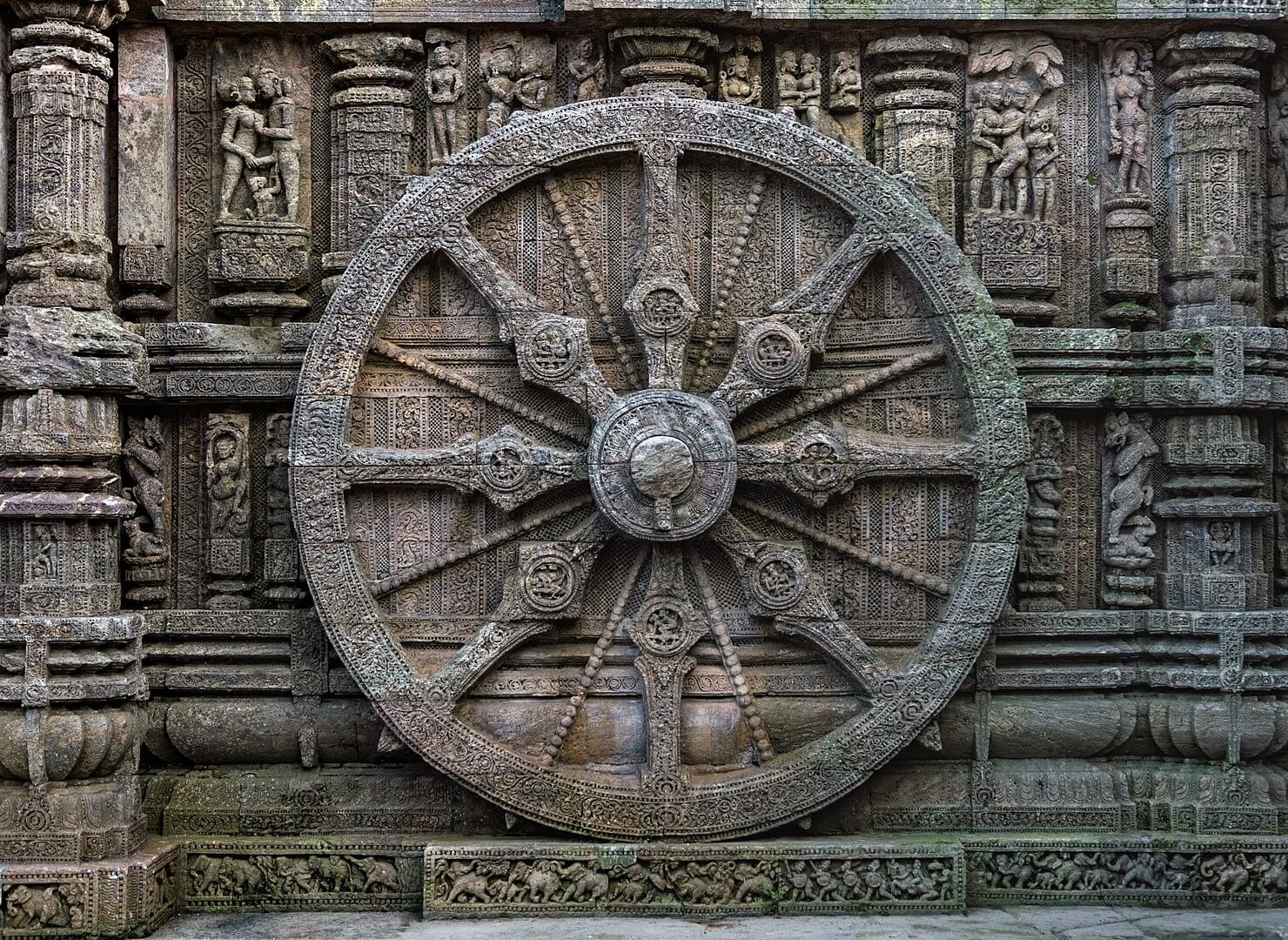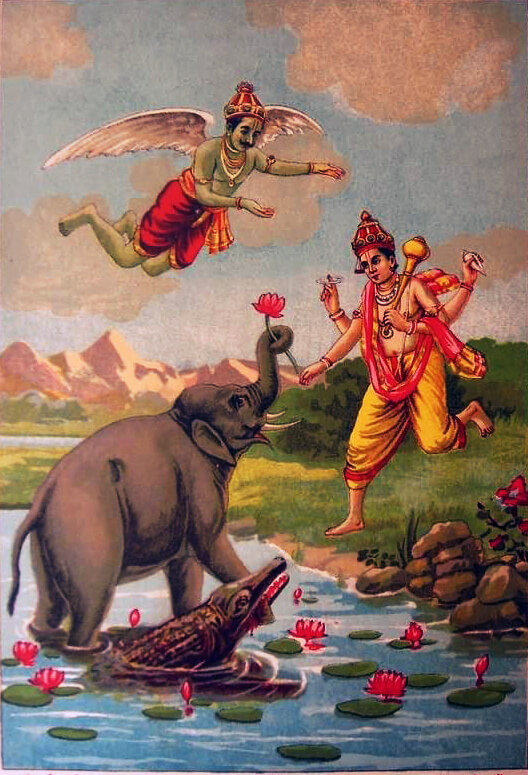Leisure • Eastern Philosophy
Four Great Ideas from Hinduism
Even if we are not religious and have no interest at all in becoming a Hindu, Hinduism offers us at least four fascinating ideas…
1. Look Forward to Death
Hinduism is hugely radical in suggesting that there is nothing especially noble or interesting about being alive.
Once we look at matters dispassionately, a lot of what we have to go through is misery and suffering: we need — with great effort — to grow up, to assume responsibilities, to master a profession, to have a family, to take our place in societies full of backbiting and hypocrisy, to watch those we love get ill and eventually to succumb to old age ourselves. To think highly of ‘life’ is, through a Hindu lens, a fundamental intellectual error.
As Hinduism sees it, our real purpose is to be done with life forever; that is the true summit of existence. Hinduism reverses the Western equation: the sinful and blinkered are forced to live forever, the righteous and awakened are privileged enough to be able to die. If we are not careful, if we do not show sufficient mercy and imagination toward others, we may well — Hinduism suggests — be subjected to the ultimate punishment: we will have to carry on into eternity.
The symbol of this ghastly on-goingness is the eight-spoked wheel of ‘samsara’, the most commonly depicted item in the religion, which evokes the pitiless and unceasing nature of life — to which we are committed unless we take a disciplined series of averting actions which together comprise the central components of Hindu ethics.

Hinduism does not suggest that we will carry on forever in our own bodies. According to the process of ‘samsara’, we are reborn into a succession of different outward envelopes, as each example is eroded away and disintegrated by time. Because samsara is at work across the whole animal kingdom, we might find that our enduring soul (‘atman’) transmigrates at our death into the body of a woodlouse, a pelican or a house spider (though we might also be reborn as a paediatric nurse or the president). What determines the quality of the migration is the degree of ‘karma’ or virtue that we have accrued in our lives. Among the many reasons why we might have to be kind to others is an awareness that unkindness might wind us up having to suffer a cycle or two of life as a cockroach or a naked mole rat.
The suspicion that life is constantly painful and anxious is one that we largely have to bear in a very lonely way in the philosophies of the West; in those of the East, pessimism is ennobled and takes centre stage. We are permitted to feel weary and amply dissatisfied; we have, without quite knowing it, been alive since the start of creation — and it is untenably exhausting and frustrating. The trick, and the true prize, will be to be good and wise enough to learn to die once and for all.
2. Rejoin Cosmic Totality
For Hindus, the way to step off the treadmill of eternal existence is to realise that, despite many appearances to the contrary, however paradoxical or absurd the idea might sound, we and the universe are in truth one.
From the earliest age, we tend to assume the very opposite. It seems self-evident that we are one kind of thing and the tree over there, the relative over here, the clouds in the sky, the monkey on the parapet and the river wending its way to the sea belong to quite different categories. Yet Hinduism insists that our belief in difference belongs ultimately to a realm of ‘maya’ or illusion. If we look more deeply into the nature of things, through the help of teaching and spiritual exercises, we stand to discover the remarkable unity of all elements. Unlike what appearances imply, everything we can see and experience around us belong to the same life force: the leaves unfurling on the tree, the child learning to read, the earthworm digging its tunnels, the lava bubbling from the earth, all belong to a single unitary power which only egoistic prejudice has hitherto prevented us from acknowledging as one.
Most of our pain, Hinduism argues, arises from an overeager attachment to the difference between ourselves and the rest of the world. We pay inordinate attention to who has slightly more money or respect than we do, we are constantly humiliated by people and events that don’t seem to honour our sense of uniqueness.

But in a process known as ‘moksha’ or liberation, we can throw off the veil of illusion that works to separate us from the universe and can start to identify with cosmic totality. It no longer matters exactly where we end and others begin; everything belongs to the same whole that we have mistakenly and unnecessarily carved up into parts. There is a little less reason to grasp, to be puffed up, to be proud or to become embittered. We can survey the course of our lives and of our societies with calm indifference. We can cease to identify happiness with the working out of our will upon the world — and take in with compassion and serenity whatever destiny throws our way. We enjoy ‘paripurna-brahmanubhava’, the experience of oneness with ‘brahman’, the principle of all things.
Once we have let go of our own ego like this, we may have a few more years left to live, but we can be sure that — eventually — we will not need to keep returning. Constant rebirth is the fate of those who cleave too tightly to their own selves. By contrast, those who have learnt to surrender can at their demise merge with the universe and will never need to suffer the indignities of individual life again.
3. Don’t Forget Money
We might expect that a religion devoted to spiritual enlightenment would have scant concern for money and possessions. But Hinduism surprises and challenges us by suggesting that — despite everything — what it calls ‘artha’ or a concern for material prosperity has a place within a wise life.
Hinduism is not directing us towards crass materialism. It doesn’t want to exhaust us with overly rich foods or attention-seeking displays of wealth. But it is aware — with a touching practicality — that many good and elevated things require a degree of financial support in order to go well. One won’t be able to undertake spiritual exercises unless one is able to take a considerable amount of time off from practical duties every day. Meditation on nothingness can be substantially assisted by having a servant or two to take care of the laundry and the housekeeping.
Hindus traditionally direct their hopes for material comfort to Lakshmi, the goddess of prosperity. One of the most popular of all Hindu deities, she is typically represented holding two lotus flowers that speak of spiritual liberation as well as material good fortune. She is usually accompanied by at least one elephant, a symbol of power and strength, and a swan, an animal that is at home both in the air and in the water, and thereby speaks of an ability to combine competence in the material and spiritual realms.

Lakshmi understands, and would never condemn, one’s appetite for a better house or a more high paying job. Her role isn’t to make us feel guilty about wanting more wealth, it is to remind us that the true point of money is — in the end — to enable us to forget about money.
4. Don’t Turn Against Sex
We have come to expect very little by way of encouragement or sympathy in relation to sex from religions. At best, a blind eye, at worst, a constant hounding and reminder of the evils of the flesh.
But Hinduism surprises us; it made the remarkable step of placing sexual fulfilment — ‘kama’ — among the four ‘puruṣārthas’, or aims of human life, alongside ‘dharma’ (morality), ‘artha’ (prosperity) and ‘moksha’ (spiritual liberation).
Hinduism’s respect for sex was rooted in a particular understanding of what lies behind our erotic feelings. These do not stem — as has so often been alleged — from a base animal impulse; they are a means by which we can sense the unity of the universe (‘brahman’).

Normally, we live beneath a veil of illusion which persuades us of the separateness of all things, bodies included, but our sexual desires push us to break down the barriers between ourselves and others. We might colloquially say that we are turned on, but through a Hindu lens, at the core of our excitement is the sense that we are breaking down the illusion of separateness and taking a small but important step towards oneness with what we can, without exaggeration, following the religion, term the universe.

























